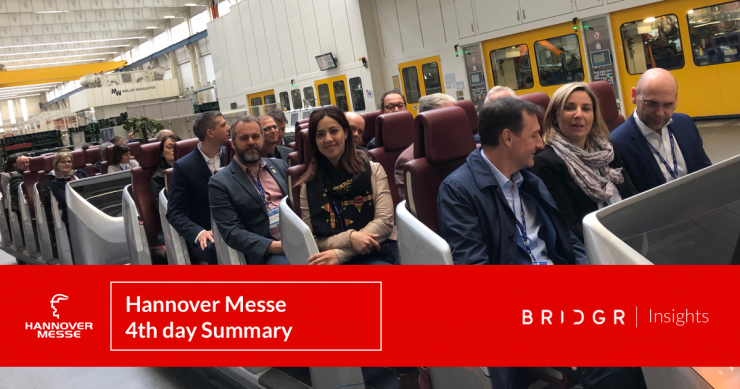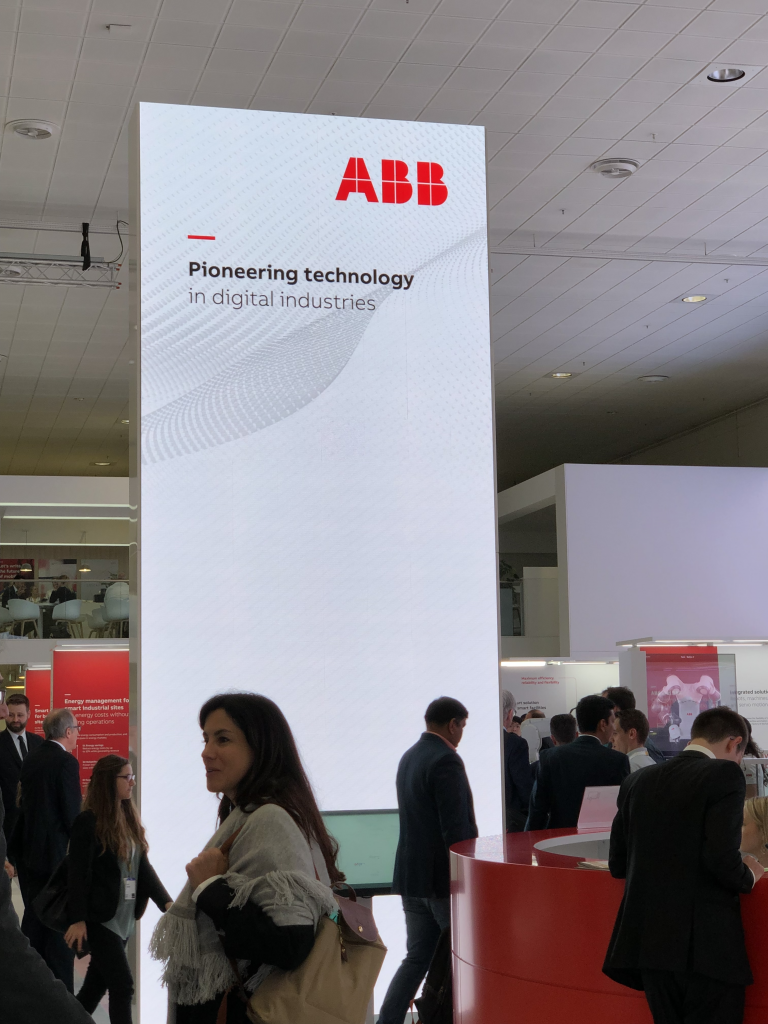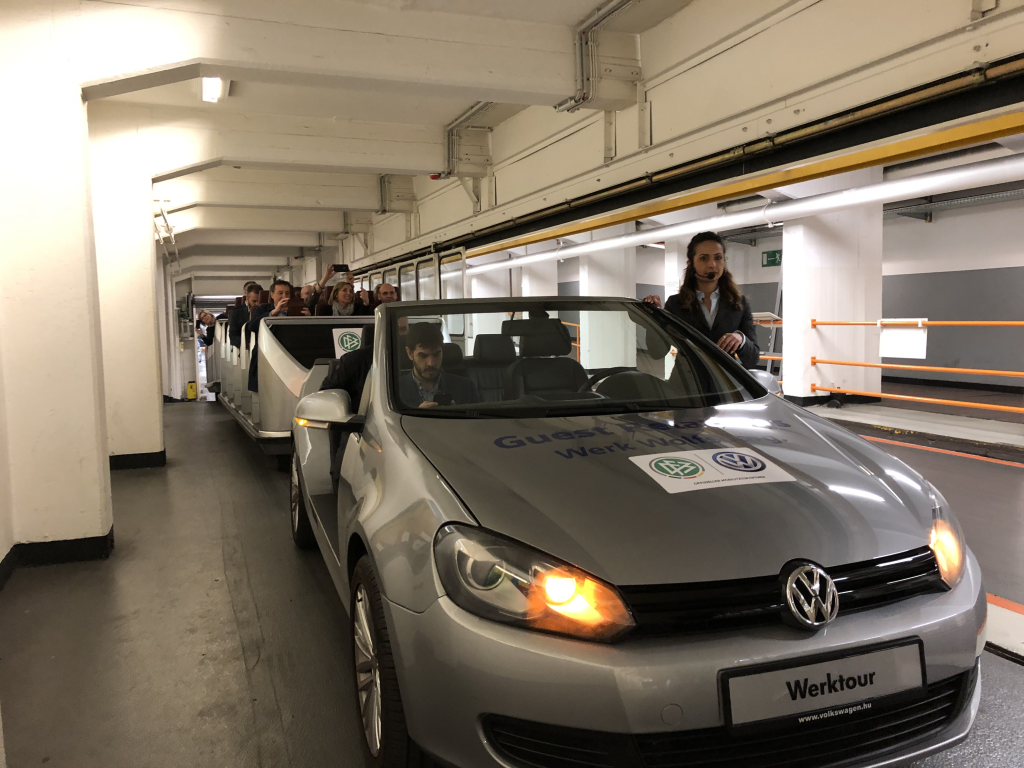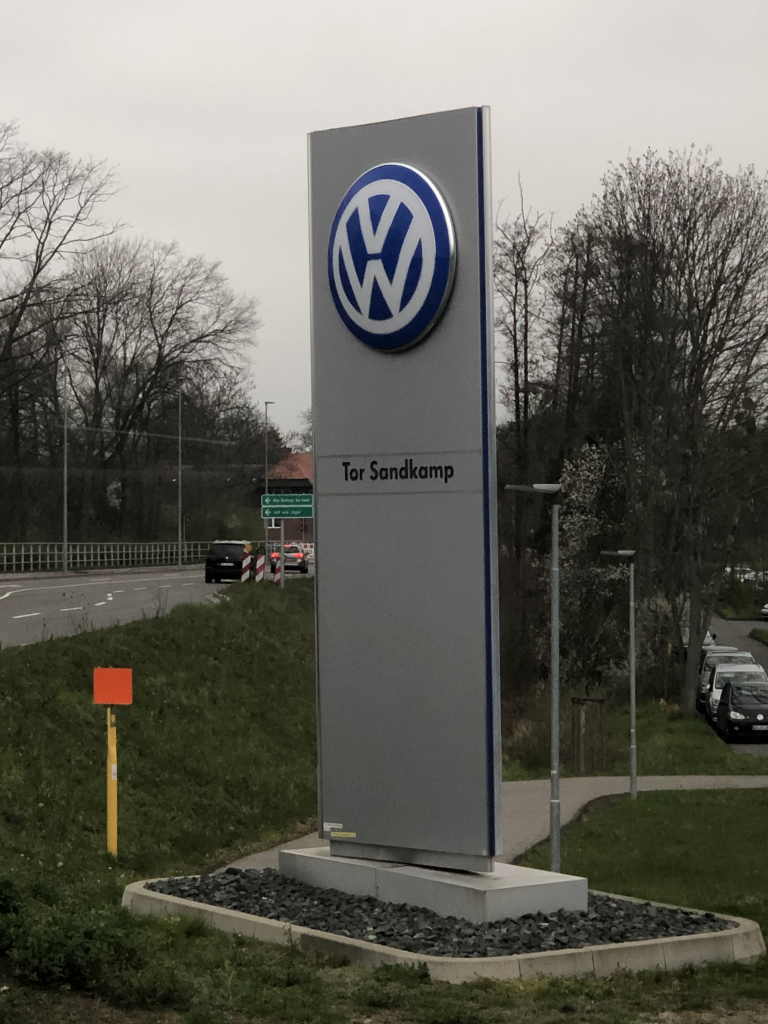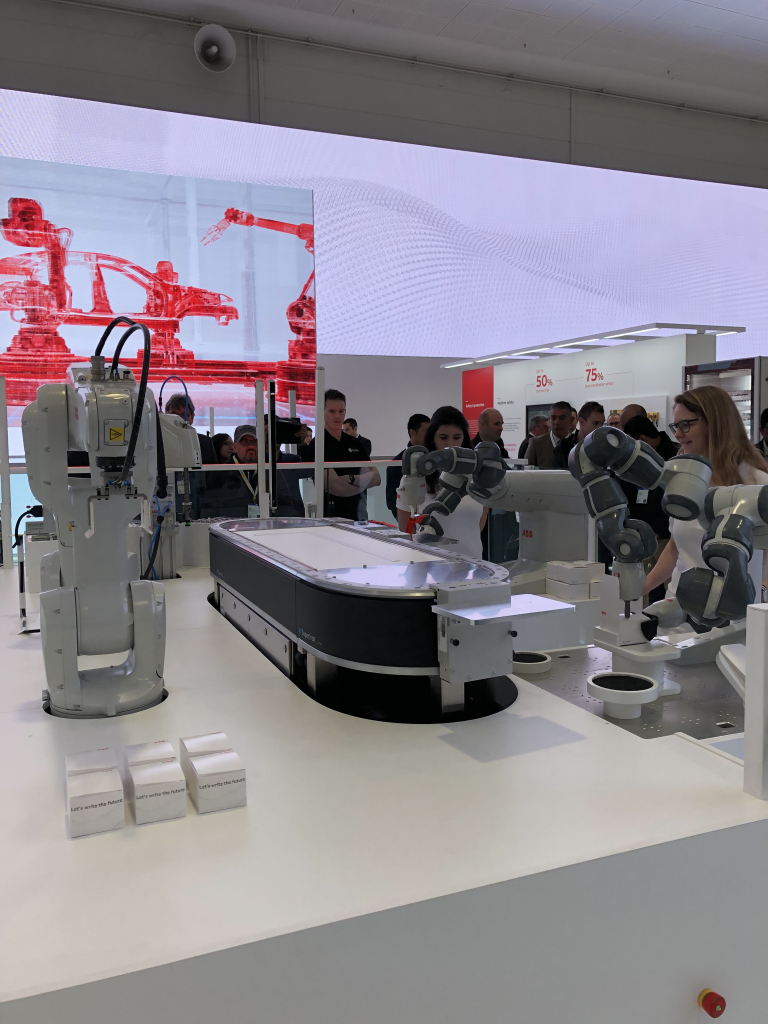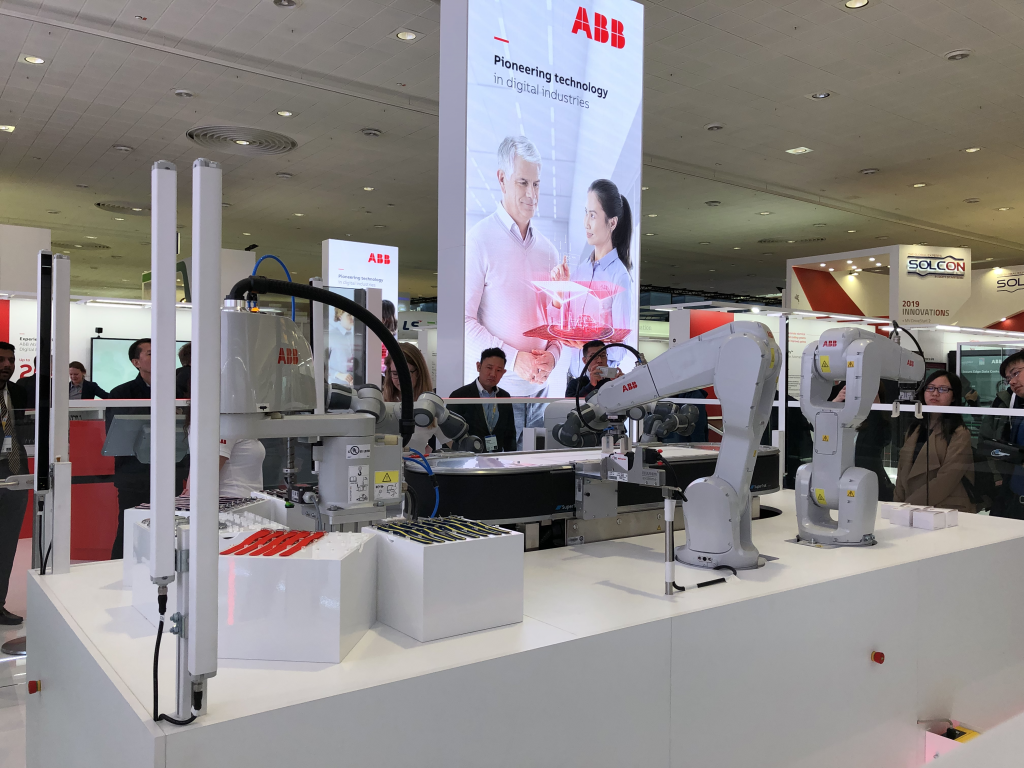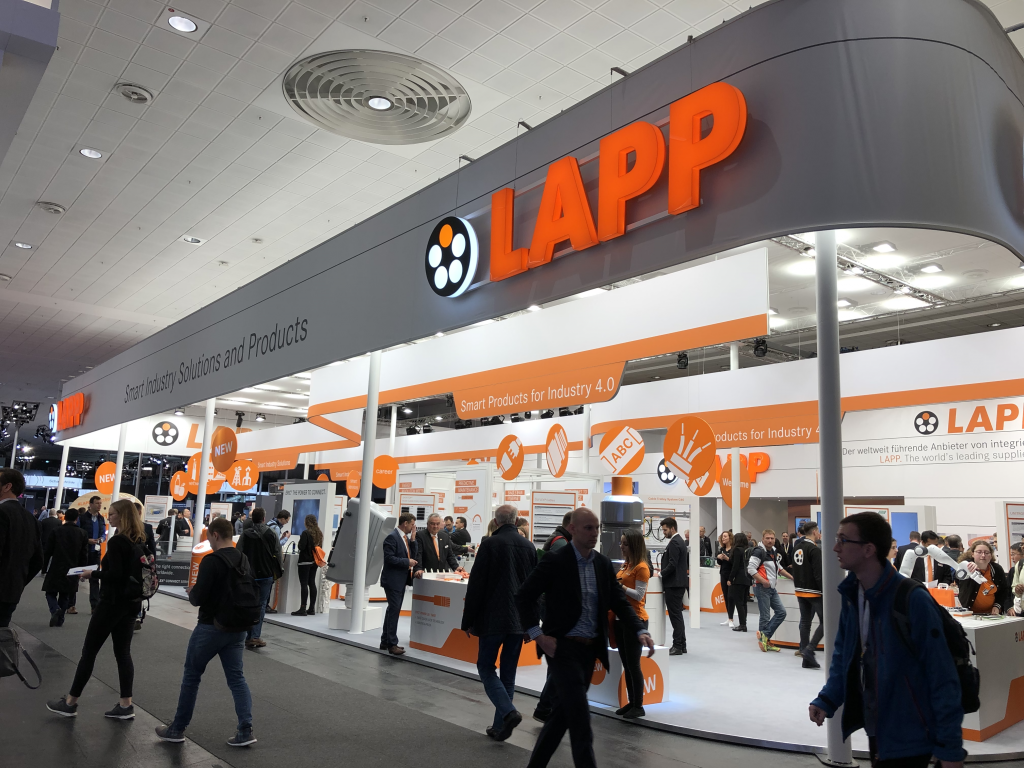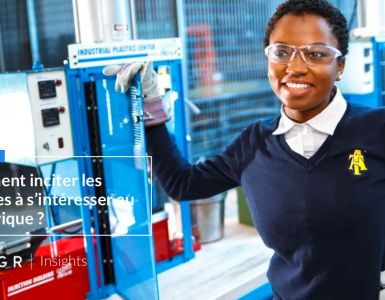The Hanover Mass in Germany, better known as “Hannover Messe”, an international reference trade show for the industry sector that welcomes thousands of global industry players each year, has taken place this year, starting today, Sunday, March 31, 2019.
To read the other recaps, please follow the links bellow :
– 1st Day summary – Quebec’s Minister of Economy and Innovation, Pierre Fitzgibbon | EPlan | Fraunhofer | Festo
– 2nd Day summary – RCEI 4.0 | CRIQ | its Owl | Région Grand Est (France)
– Hannover Messe: 3rd Day summary Fraunhofer IFF | Bosch | Huawei
9am: Start-up space visit
Startups, a topic that we haven’t discussed in the last 3 days, so I’m going to visit the Startup area of the Hannover Messe! I absolutely wanted to see the type of startup present and I was not disappointed, startups from all over Europe were present with different technologies, ranging from software to exoskeletons for the industrial field.
I also discovered, several incubators or accelerators that aim to help startups have their first big group as a customer. There is so much to say here that I decided to do a separate article (soon online).
10am: ABB tour
After visiting the stands of Siemens, Festo, Bosch and many others, the ABB stand no longer seems as impressive. We quickly realize that many of the major innovations are developed in collaboration between these large groups. It was still very interesting to see their part on energy and electrical distribution!
12h: Volkswagen plant in Wolfsburg (Germany)
Finally, the moment I have been waiting for since the beginning of the mission comes, the visit of the largest factory in Germany and Europe: 6x2km, an area as large as the whole Principality of Monaco.
After an almost 2h road trip, we arrive in this complex, or should I say, this mini-town, where 5 models are produced today: Volkswagen Golf, Golf Sportsvan, e-Golf, Golf GTE, Golf GTI, Golf R, Tiguan, Touran, SEAT Tarraco (because SEAT belongs to VW).
We begin the visit with a short film of 17 min on the history of the complex, how it was built for the production of the Beetle and then was transformed during the war into a factory of war machines. This is a very good appetizer of the visit!
We then go to the factory where mini trains drawn by real VW cars are parked for visits! Our guide, a very dynamic young woman, begins her story and here are some highlights:
- The plant operates 24/7
- The plant produces more than 3 500 cars per day
- The complex contains: 12 service shops, 16 canteens, 1 butcher, famous for its sausages, a learning workshop, a bus service, firefighters and safety service, 19 medical centers, a sports room and a travel agency
- All cars in the complex are company-owned and can be used by the 60 000 employees
- Each car model has between 5 and 6 molds for its body’s steel
- They use more than 2 600 tons of steel and all residues are resold at 100% to steel vendors
- They still have one of their firsts newspapers that run between 1940 – 1974
- The foundations of the plant are 30m deep
- They have a high-performance Just-in-time system, allowing them to have just 2 days of stock and receive items like vehicle seats only 1 hour before assembly!
- They also produce plastic and steel components for Skoda, Seat and Audi
- They ensure more than 60% of the production of different components of their vehicles
- Employees can change positions 4 times per shift to avoid boredom!
- There are over 60 000 employees, 60% in production, 20% in R&D and 20% in administration. 20% are female
- Volkswagen is Germany’s second largest employer after Frankfurt’s Airport
- There are more than 4 000 robots that are renewed every 6-7 years! 70% are Kuka, the rest Fanuc and ABB
- There are 6 000 bicycles on the complex to get around with a garage for their maintenance!
- The least automated parts are paint (finishes) and quality assurance
- Nailers can be changes in 10 seconds and there are more than 20 shades of white
- A car is produced in 2-3 days of production but, in reality, it is finished in 20h
- 60% of production is destined for exports
- The production lines are multi-product and personalized, meaning that you see a Golf 7 followed by a Touareg and another Golf with a steering wheel to the right, without any interruption in production
After just an hour of visit, and which for me was better than a day at Disneyland, the visit ends and we are all impressed to see, how concretely the technological advances have made production evolve. I really would have liked to learn more and get into the details! It will be for next time!
6.30pm: Return and End of the Hannover Messe 2019
The Hannover Messe ends for me on a note of wonder and excitement. I am aware of all the work we have to do in Quebec to increase our productivity and how the very concept of work must evolve to become more inclusive and provide concrete solutions to the needs of humanity.


